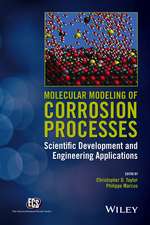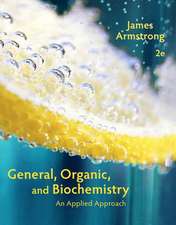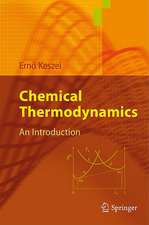Structure and Dynamics of Atoms and Molecules: Conceptual Trends
Editat de Jean-Louis Calais, Eugene S. Kryachkoen Limba Engleză Paperback – 14 oct 2012
Preț: 386.99 lei
Nou
Puncte Express: 580
Preț estimativ în valută:
74.07€ • 80.49$ • 62.26£
74.07€ • 80.49$ • 62.26£
Carte tipărită la comandă
Livrare economică 21 aprilie-05 mai
Preluare comenzi: 021 569.72.76
Specificații
ISBN-13: 9789401041164
ISBN-10: 9401041164
Pagini: 276
Ilustrații: XII, 262 p.
Dimensiuni: 160 x 240 x 14 mm
Greutate: 0.39 kg
Ediția:Softcover reprint of the original 1st ed. 1995
Editura: SPRINGER NETHERLANDS
Colecția Springer
Locul publicării:Dordrecht, Netherlands
ISBN-10: 9401041164
Pagini: 276
Ilustrații: XII, 262 p.
Dimensiuni: 160 x 240 x 14 mm
Greutate: 0.39 kg
Ediția:Softcover reprint of the original 1st ed. 1995
Editura: SPRINGER NETHERLANDS
Colecția Springer
Locul publicării:Dordrecht, Netherlands
Public țintă
ResearchCuprins
Elements of Hydrogen Transfer Theory.- 1. Introduction.- 2. One-Dimensional Tunneling.- 3. Spectroscopic Splittings.- 4. From Quantum Beats to Relaxation.- 5. Calculation of Relaxation Rates.- References.- Building a Bridge Between Ab Initio and Semiempirical Theories of Molecular Electronic Structure.- 1. Introduction.- 2. Theoretical Bridge Between Ab Initio and Semiempirical Methods.- 3. The Ab Initio HV Method.- 4. Ab Initio Computations of Correlated Semiempirical-Like Integrals.- 5. Acknowledgment.- 6. References.- Electron Delocalization in The Theory of Intermolecular and Intergroup Interactions: Cause, Effect, Prevention.- 1. Introduction.- 2. Unphysical States.- 3. Separability and Localizability of Electronic Wave Functions.- 4. Level Shift Operators.- 5. Hartree-Fock Approximation.- 6. Correspondences and Extensions.- Appendix A.- References.- Quantum Dynamics of Diatoms in External Fields.- 1. Introduction.- 2. The Hamiltonian.- 3. Quantum Time Evolution.- 4. Multiphoton Absorption in Hydrogen Fluoride.- 5. Laser Assisted Dynamics in Boron Hydride.- 6. Conclusions.- References.- Dimensional Scaling in Quantum Theory.- 1. Introduction.- 2. The Jacobian Weighting Factor.- 3. The Large-D Limit.- 4. Three-Particle Systems.- 5. An Atom-to-Molecule Transformation.- 6. N-Particle Systems.- 7. Discussion.- Acknowledgements.- References.- Probing The Collective and Independent-Particle Character of Atomic Electrons.- 1. Introduction.- 2. Symmetry-Based Interpretation.- 3. Interpretations Based on Wave Functions.- 4. Interpretations Based on Classical and Semiclassical Models.- 5. Summary and Conclusions.- References.- Electronic Structure Models: Computations, Chemical Insights and Appropriateness.- 1. Introduction.- 2. Model Hamiltonians.- 3. Response Properties, Wave Functions, and Levels of Theory.- 4. Example: The Frequency Dependent Hyperpolarizabilities of Push Pull Substituted Aromatics.- References.- The Work Formalism: A New Theory of Electronic Structure.- 1. Introduction.- 2. The Work Formalism.- 3. Comparisons with Other Local Potential Theories.- 4. Results of Application to Atoms.- 5. Conclusions and Future Work.- References.








